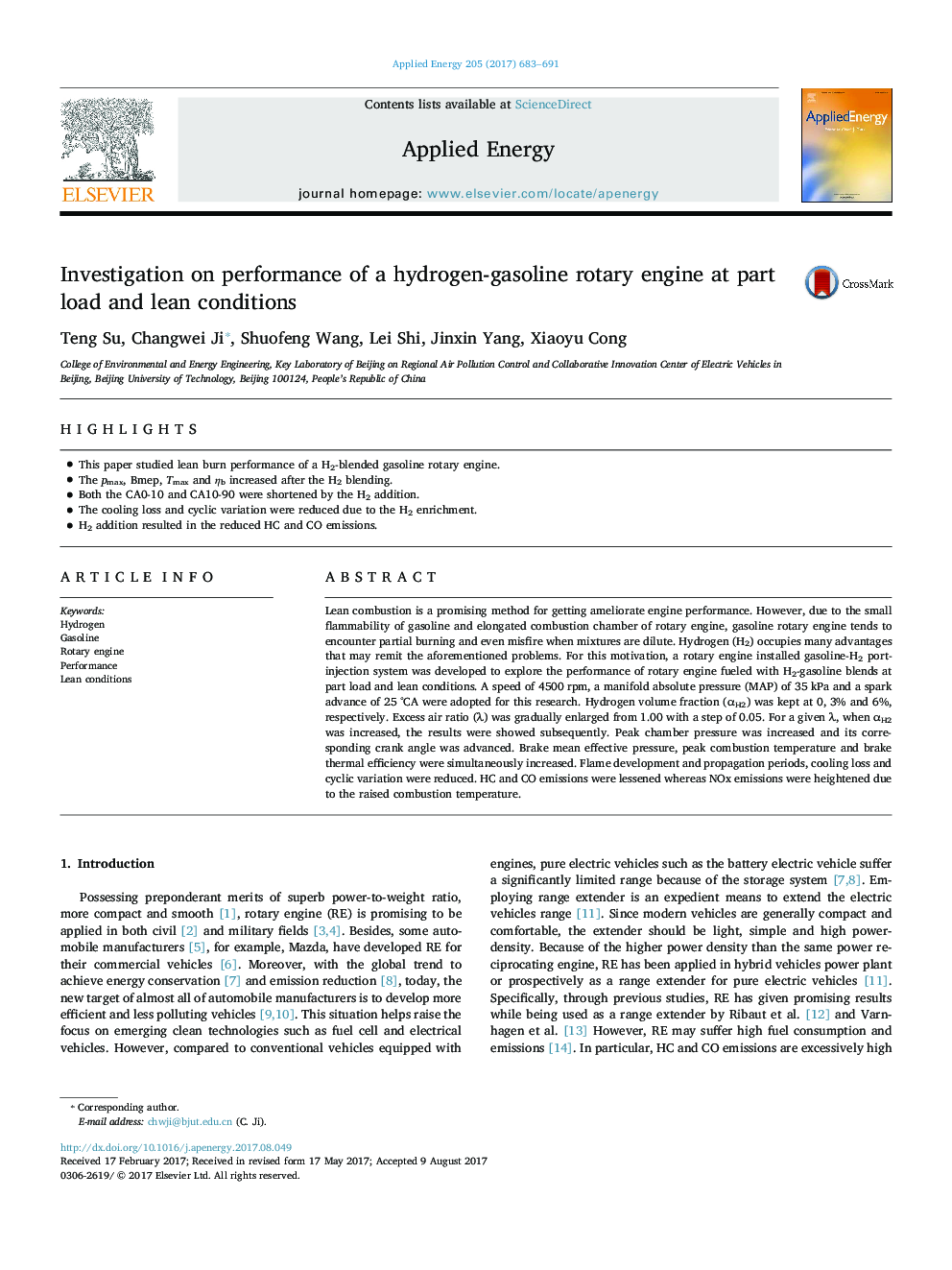| Article ID | Journal | Published Year | Pages | File Type |
|---|---|---|---|---|
| 4915878 | Applied Energy | 2017 | 9 Pages |
Abstract
Lean combustion is a promising method for getting ameliorate engine performance. However, due to the small flammability of gasoline and elongated combustion chamber of rotary engine, gasoline rotary engine tends to encounter partial burning and even misfire when mixtures are dilute. Hydrogen (H2) occupies many advantages that may remit the aforementioned problems. For this motivation, a rotary engine installed gasoline-H2 port-injection system was developed to explore the performance of rotary engine fueled with H2-gasoline blends at part load and lean conditions. A speed of 4500 rpm, a manifold absolute pressure (MAP) of 35 kPa and a spark advance of 25 °CA were adopted for this research. Hydrogen volume fraction (αH2) was kept at 0, 3% and 6%, respectively. Excess air ratio (λ) was gradually enlarged from 1.00 with a step of 0.05. For a given λ, when αH2 was increased, the results were showed subsequently. Peak chamber pressure was increased and its corresponding crank angle was advanced. Brake mean effective pressure, peak combustion temperature and brake thermal efficiency were simultaneously increased. Flame development and propagation periods, cooling loss and cyclic variation were reduced. HC and CO emissions were lessened whereas NOx emissions were heightened due to the raised combustion temperature.
Related Topics
Physical Sciences and Engineering
Energy
Energy Engineering and Power Technology
Authors
Teng Su, Changwei Ji, Shuofeng Wang, Lei Shi, Jinxin Yang, Xiaoyu Cong,
